Of all the places I had visited on the Konkan Coast, Udupi surprised me the most! The sprawl and infrastructure of Manipal University had already astounded me. And taking that impression further, was Udupi’s spectacular temple town!
An imposing and intricately carved Rath (chariot), parked in front of the popular Sri Krishna temple makes a grand announcement. Founded in the 13th century by saint Shri Madhavacharya, it is one of seven Muktisthalas of Karnataka. The unique feature of this temple is that Lord Krishna is worshipped through a silver-plated window. Legend has it that in the 16th century, an ardent believer named Kanakadasa, came to Udupi to worship Lord Krishna. Being of a lower caste, he was not allowed inside. But God disposed what man proposed! Lord Krishna, pleased by the worship of Kanakadasa, created a hole in the back wall of the temple and turned around to face Kanakadasa. Since then, this hole is known as Kanakana Kindi – Kanaka’s Window. We saw throngs of devotees praying in this unusual manner.
The Shri Krishna temple is surrounded by Astha Mathas (eight temples). There is also the Anantheshwara temple which is over 1,000 years old. The Rath Yatra or journey of the Rath takes place annually and attracts many Krishna devotees and visitors who flock there to see the huge Rath being taken around in a procession.
A bustling bazaar is another attraction of this temple town. In addition to selling sandalwood, garlands, flowers, artifacts and other offerings for worship, Alan and I found interesting artifacts made from copper, brass, steel, wood, even coconut shells, as we browsed around, trying to work up an appetite. Jewellery stores flaunted their glittering gold and silverware and seemed to be doing brisk business. As did the various clothes and fabric stores.
Just a few feet away is Mitra Samaj in the centre of the temple town, reputed to be THE place for pure South Indian vegetarian food. A quick glance revealed that Tripadvisor was also of the same opinion. It was established in 1949 by Mr. Gopal Holla when he was in his mid 20’s. As the name indicates, Mitra Samaj was where friends traditionally met for quick and delicious snacks, before heading home. Today, locals and global tourists come for their ‘Golibaje (round flour batter fritters) – believed to have originated here. We ordered the Golibaje and the also their famous Masala Dosa (rice batter crepes rolled over a spicy aromatic potato mash) which was served on a plate over a banana leaf. I was curious to check their cuisine that totally omits onions and garlic. It was pure deliciousness all the way! After a visit to this popular Temple Town, most people take their taste buds to this iconic restaurant to savour authentic dishes of the Udupi region – Banana Buns, Jackfruit Mulka, Rava Uthappam, Bullet Idli and Banana Rasayana. The busy, bustling ambience of Mitra Samaj quickly faded as Alan and I plunged into the serious business of eating. Needless to say, we too ended up licking our fingers with unashamed gusto. Check out for the Golibage recipe in our Recipe Section.
The next morning was reserved for an old favourite haunt of Alan’s – and almost all of the Mangalorean folks I have met. Their nostalgic stories inevitably include Diana Restaurant, located on the second floor of the Diana Hotel Building in Ajjarkad. On entering we met the owner Mr. Vithal Pai and in conversation I mentioned that I was Goan. His eyes lit up and he said,’ Amchi gele mugo tu’. Meaning: You are one of ours. It sure felt good to be welcomed with such familial warmth. Established in 1962, Diana is a landmark for Udupi. One of the oldest restaurants in town, it used to be a hangout for students, young lovers and foodies.
The ambience is unfussy and the menu, totally vegetarian. In addition to the usual South Indian fare of Dosas, Vadas and Chutneys, most people go there for their Vegetable Cutlets and Poori Korma. Customers almost always complete their meal with their signature dish – ‘Gadbad’ Ice Cream. Mr Pai, likes to narrate the story of how this ice cream got its name. One day, a large group of customers demanded ice cream. Being winter, stocks were low. His uncle, wanting to please the customers, decided he must do something. At the bottom of a tall glass, he started with a scoop of jelly, on top of which he stacked vanilla ice cream, a scoop of diced tropical fruit mix followed by pista ice cream, on top of which was sprinkled a dry fruit mix of cashew nuts, dates and 2 types of raisins. The crowning glory was a final scoop of strawberry ice cream. And voila, this iconic ice cream, created in a tearing hurry, made a delicious difference on the menu. Later they added another ingredient in between – Horlicks Cake. A happy ending to the Gadbad (confusion)! And now, here we were, savouring the unique melange of textures and flavours of 3 ice creams in one slurp! Heading home after a hearty meal, we found Diana store on the ground floor, selling local specialties – Chaklies, Laddoos, Chips, Cookies, Cakes, Dry Fruits and Nuts, Ice Creams, Pickles, Papads and more. Needless to say, our return was delayed by a couple of hours! Check out for the Vegetable Cutlet recipe in our Recipe Section.
Udupi was a nostalgia-fueled trip, and Kallianpur, where Alan’s childhood memories were firmly entrenched, was our next stop. Over the years, I had travelled to this place via Alan’s memories. And now, here it was: A quaint village, sitting snugly on the banks of the Suvarna River, which I knew swelled and broke its banks during the Monsoons. But right now, it was placidly flowing along, giving Kallianpur it’s distinct flavour. Tiny islands, some with only cattle for visitors, made verdant statements in the river. And even though it had changed hands, Alan’s house still stood rock solid, encapsulating all his childhood memories within its walls and large compound. His memories continued to flow like the River, as we made our way back to Udupi town…
That evening, before dining at yet another iconic restaurant in Udupi – Usha Hotel, we took a stroll around Alan’s alma mater – St. Cecily’s Convent. The over 60 year-old mango tree still stood in the neat and tidy courtyard. The mangoes were strictly for the nuns who ran the institution. Alan and his mates could only lust after this juicy fruit… the memory still raw as the fruit he yearned for. Usha was a typical South Indian non-vegetarian restaurant. The emphasis is more on the food and less on the ambience. We were there to eat ‘Mutton Chukkha’ (as pronounced by the locals) – dry, spicy mutton, prepared with ground coconut. We ordered this much-touted dish and 2 fish thalis. The Mutton Chukkha was everything Alan had promised me it would be. Tender pieces of mutton that melted in your mouth, leaving an explosion of flavours, urging you to take the next bite. I was hooked with this dish that was part of Alan’s childhood memories. There’s truly nothing tastier than nostalgia! To top it all, the fried fish was my all-time favourite – Bangda (mackeral). Pan fried in semolina, it was crisp on the outside and flaky and juicy inside. You could tell this fish was fresh off the boat! Check out for the Mutton Chukka recipe in our Recipe Section.
On our itinerary for the next day, was Gomateshwara, the renowned Jain monolith in Karkala. We had engaged a taxi for this journey and along the way, we stopped to visit the St Lawrence Basilica in Attur. Originally built in 1759 in another spot, Tippu Sultan demolished that church in his zeal to end Christianity in the area. Under the guidance of a Goan priest, the present church was built in 1900, with 2 huge arches framing the entrance. Just 58 kms. from Mangalore, countless devotees do a pilgrimage to this church in their belief of the saint’s miraculous powers. The feast is celebrated in January, and were lucky to be there on the last day of the novenas. It was crowded inside the church. Outside, was a large fair, selling among other things, my childhood favourite sweet – Kadio-bodio (gram flour sticks covered with powdered sugar). The stalls were packed with Ladoos, Chaklies, Halwas, Roasted Gram and lots more… so similar to the feast days in local churches in Goa. Feasts and food always go together, wherever you may be in India!
Our taxi then hurried us to the great Gomateshwara (Bahubali), the son of the first Jain Tirthankara. Right opposite is a Basadi (Jain shrine) with its four beautifully carved gates. We made our first stop there and were captivated by the elaborately carved wooden doors. The Chaturmukha sits on top of a small rocky hill, built in 1586 AD. The Basadi has four identical entrances from the four quarters leading to the Garbagriha and hence is popularly known as Chaturmukha Basadi. Built in the form of a square mandapa or hall with a lofty doorway and pillared portico on each of its four sides, plus a pillared verandah, the roof is made of massive granite slabs. It took 30 years to construct this temple. In all, there are 108 pillars inside and outside the temple.
The Basadi was shut for visitors. From here, we caught a glimpse of the commanding Bahubali rising on the rocky hill across. After exploring the Basadi which opened a short time later, we found ourselves at the foot of the 500 steps leading to Gomateshwara statue. The climb appeared daunting, but I could not return without seeing the Gomateshwara. The intriguing bit is that you cannot see the entire statue until you have climbed almost all the steps. I trudged along, footwear in hand, stopping to admire the lush-green landscape all around. When you see the grandeur of the tall Gomateshwara statue, every step is worth the effort you make!
The Karkala Gomateshwara monolith was built in 1432 CE by King Vir Pandya of the Kalasa-Karkala dynasty. This was a period when Jainism was at its peak in the South Canara region of Karnataka. The monolithic statue measures 42 feet in height, plus the 5 feet of its stone platform. Opposite the statue is a Maanstambh or pillar with a Yaksha sitting in a canopy on its top. This awe-inspiring monolith is only eclipsed by the even grander Shravanabelagola statue in Mysore, built in 981 CE. We wandered around the wall complex, soaking in the peaceful atmosphere and getting stunned by the jaw-dropping architecture of this historic place.
From the Gomteshwara hill, we got a panoramic view of the Chaturmukha Basadi, which we had just visited. Surrounded by greenery on every side, the view is unparalleled As we made our way down the 500 steps of this historic landmark, we wondered at the potent power of religion that moved men to create such masterpieces.
What stays with you forever, however, is the absolute serenity and peace that seems to ooze out of Bahubali’s every ancient stone. So much so, you want to sit there, enveloped in the eternal calm.
But we had Mangalore on our minds. That’s where we headed to the next day. But that’s for next time. Keep your taste buds tuned.
For photographs go to the Photo Gallery tab above; likewise for recipes.
Things to do in Udupi:
Temples:
• Shri Krishna and Astha Mathas
• Shri Anantheswara
• Shri Vishweshwara
• Shri Chandramouleeshwara
• Shri Anantha Padmanabha
• Batte Vinayaka
• Shri Kalikamba
• Shri Indrani Panchadurga Parameshwari
• Bramalingeshwara
• Siddhi Vinayaka – Anegudde
Churches:
• Mother of Sorrows
• Mount Rosary – Kallianpur
• Milagres Cathedral – Kallianpur
• St. Lawrence Basilica- Attur
Statues and Basadis:
• Gomateshwara – Karkal
• Chathurmukha Basadi – Karkal
Falls:
• Achakanya
• Kudlu Theertha
Beaches:
• Malpe
• St. Mary’s Islands
• Kapu
• Kodi
• Maravanthe
• Mattu
• Padubidri
• Pithrody Udyavar
• Someshwara
• Padukere
• Thrasi
Education:
• Manipal University
Best time to visit: November – March
Know your Konkan Coast

The Konkan coast runs south from Mumbai all the way to Kasargod. Quaint fishing villages and magnificent forts look out into the endless blue of the Arabian sea. Pristine beaches and coconut palm trees dot the coast all along, until you reach Malvan, the last beach town of significance, before the sands dissolve into Goa. The cuisine along the Konkan coast is as varied as it is delicious, greatly influenced by its geographic location, and layered history of the region. They are all intertwined yet distinct. Some patterns are common – like the seasons which influenced bottling pickles, and drying of fish and pork etc. The monsoon brought a lot of seasonal foods like bamboo, snails (conge) etc to the table. Coconut is an integral part of the Konkan cuisine. Apart from local influences, Portuguese and Arab influences had major impacts.



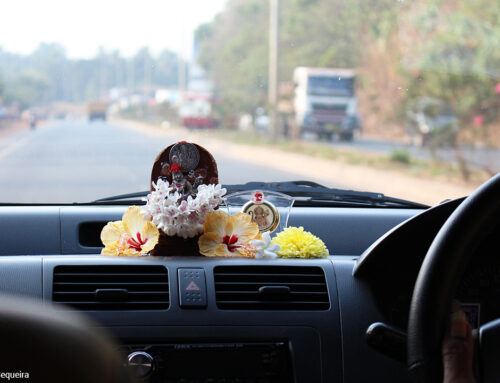
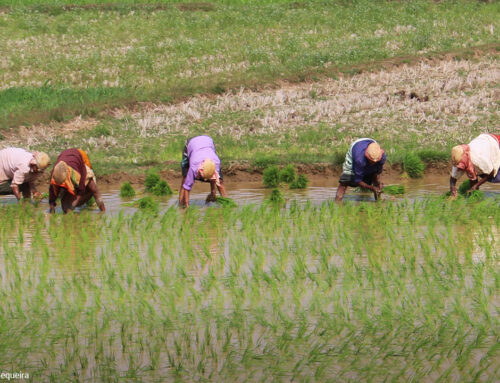
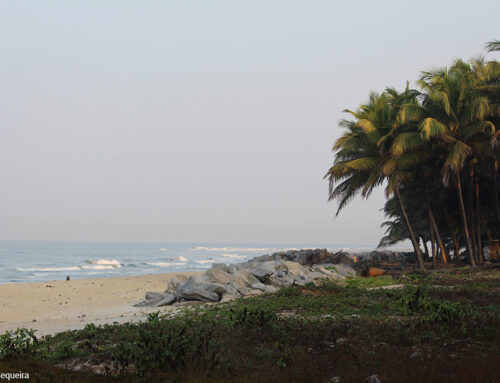
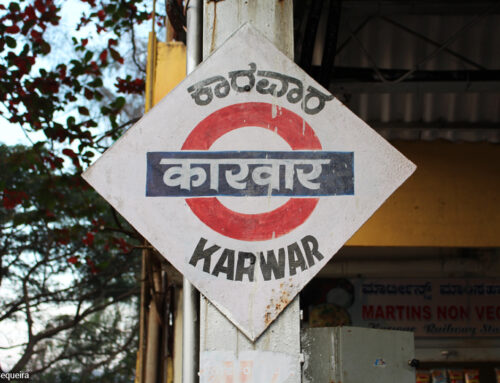

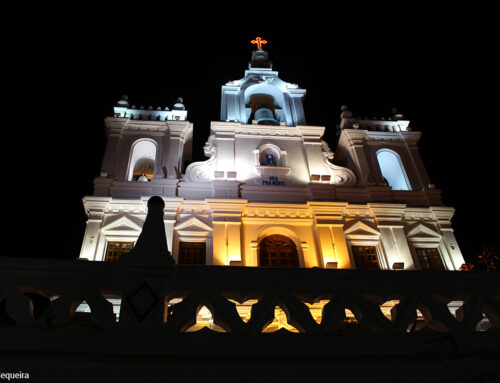
Beautifully written Milena🙂
Thank you, Iona. I hope it encourages you to visit Udupi.